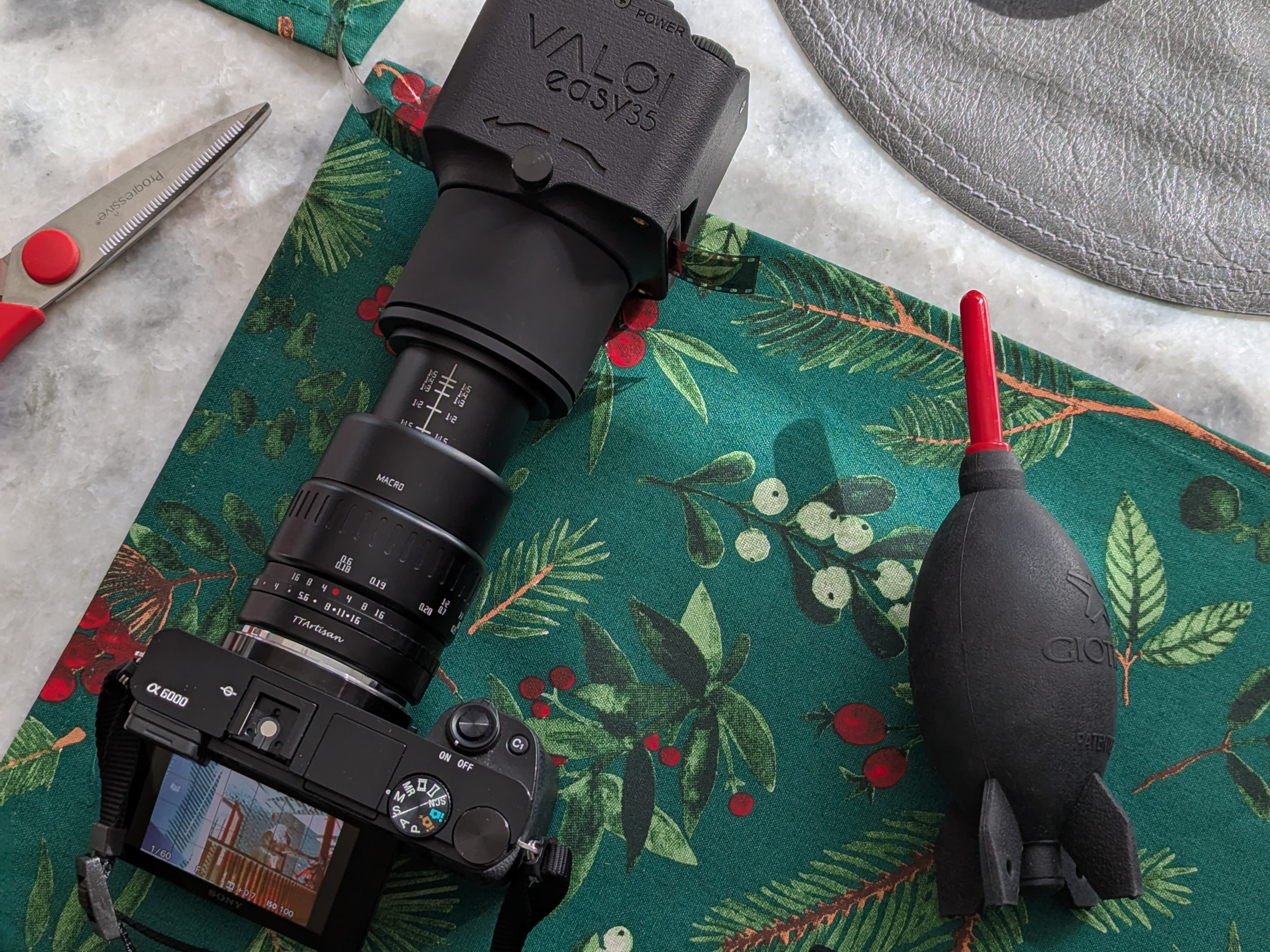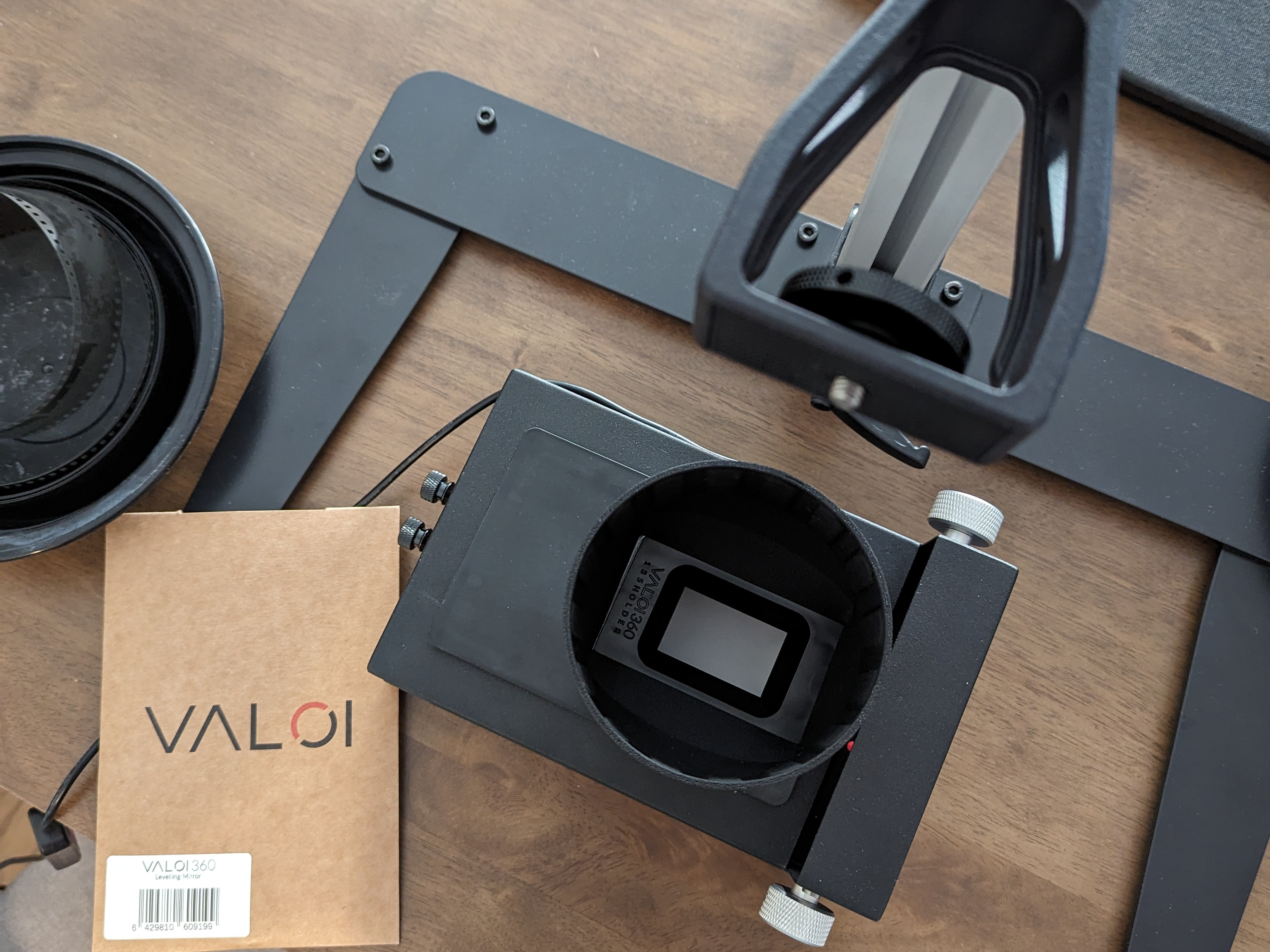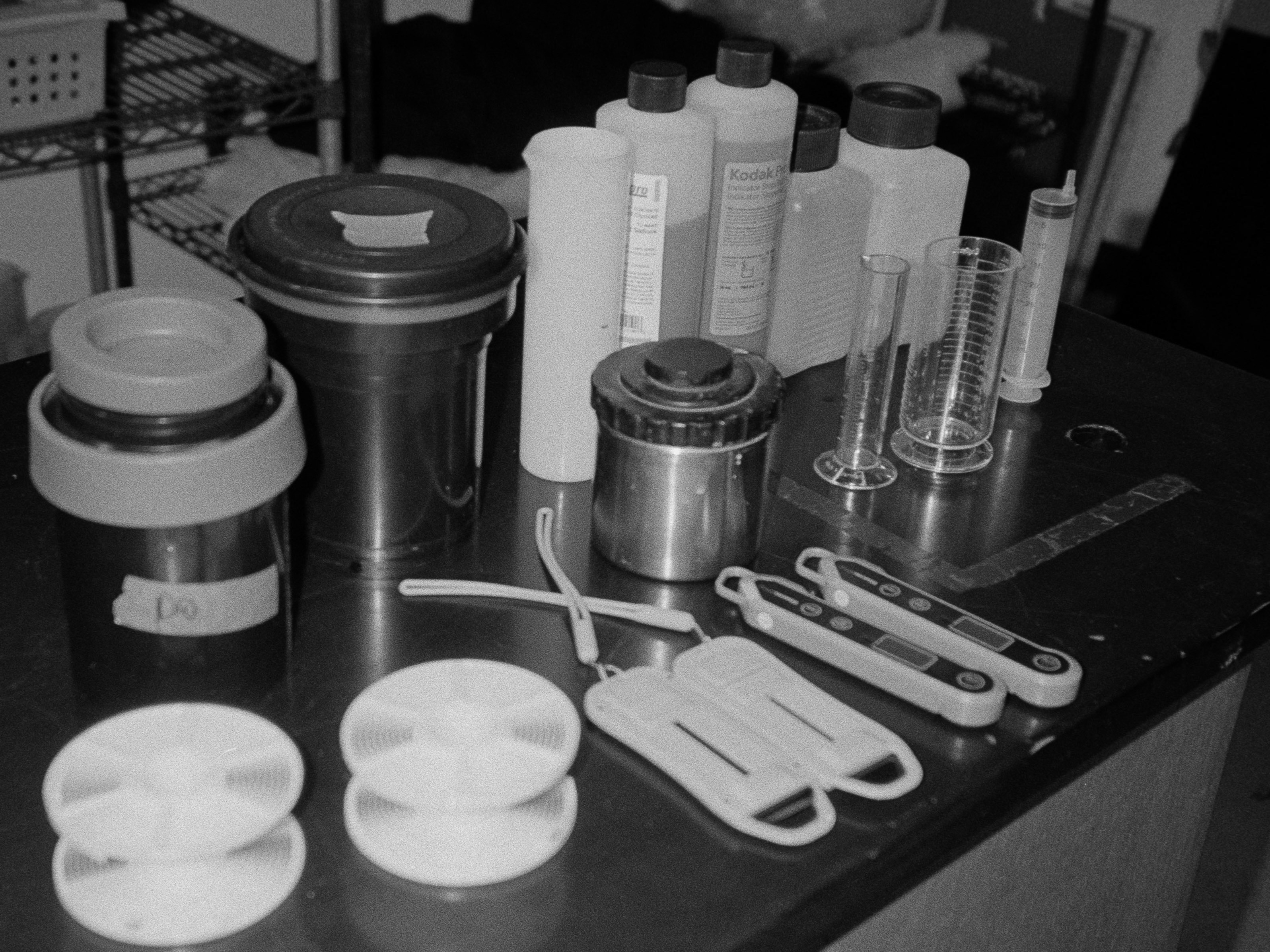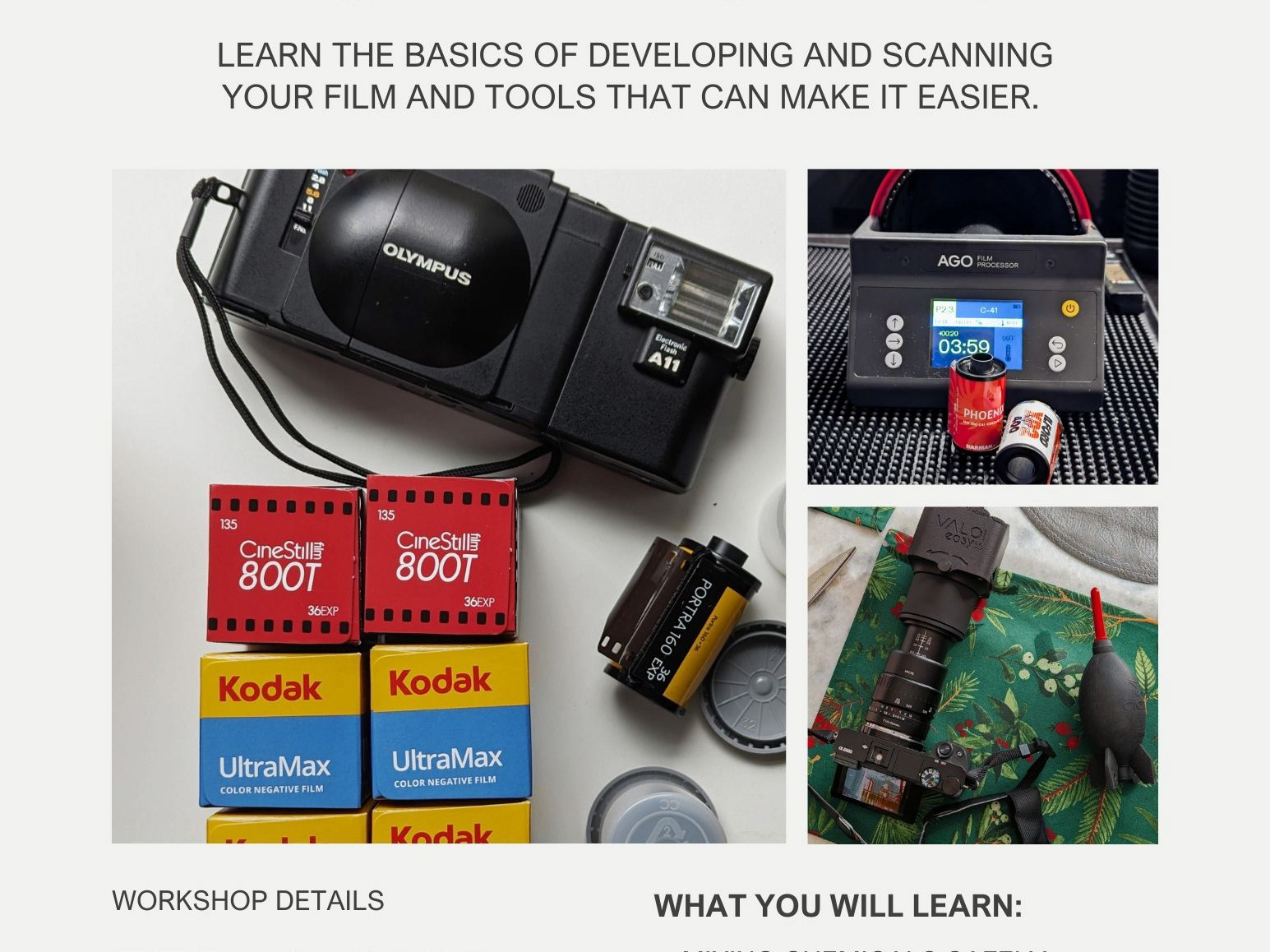As I’ve established in my past post on Why I Camera Scan, I have moved the entirety of my film scanning workflow to a mirrorless scanning setup with a two different film holders and light sources. This post will help you consider the various options available for converting your digital negative files—the camera RAW images of your film negatives produced via camera scanning—into a positive JPG image suitable for digital sharing and printing.
Things to Consider When Choosing Negative Inversion Software
Volume and Workflow
The primary considerations for selecting negative inversion software are the volume of inversions you anticipate and your preferred workflow for achieving the final product. Like most aspects of film photography, there's a broad range of options, typically involving trade-offs in quality, speed, and cost. Some solutions demand many minutes per image but offer maximum control, while others are designed for quick conversions, allowing you to finalize the positive image in your preferred editing platform or hand it off to a client.
Your choice of program will ultimately depend on how much time and effort you're willing to invest to achieve your desired results, and whether you need to produce these results at scale and with consistency for clients or your own high volume of work. I personally tend to use the best tool for the job, often switching between several software options depending on my immediate preference or which is most optimized for the current phase of my work.
Cost
Fortunately, the cost for most negative inversion software is relatively more reasonable than the initial gear investment required to produce a digital negative. The most expensive option in my roundup—my personal "gold standard"—costs $100 per license, plus an ongoing monthly subscription for Adobe Lightroom, which is required to use the plugin. The most affordable options I'll mention are open-source programs that don't require subscriptions but come with their own quirks, or plugins for the mobile version of Lightroom (currently free) that are limited to iPad, iPhone, and Android devices.
My Experience and Recommendations
When I first started scanning my own film, the market offered fewer choices. The main options were to manually invert film in a RAW processing or Photoshop-style software, or to invest in a Lightroom subscription and a license for Negative Lab Pro, which remains widely recognized today. Some also tried adapting older negative conversion software designed for flatbed scanning, like SilverFast. While open-source alternatives to Photoshop's inversion capabilities existed, I wasn't adventurous enough to completely overhaul my workflow. By 2025, however, we have a wealth of new options that have either been introduced or gained significant community notice. This includes Filmomat’s SmartConvert software and, as of August 2025, CineStill’s new plugins for Lightroom, known as CS Negative+. Depending on the task at hand, I often switch between these methods, leveraging their individual strengths.
Manual Negative Inversion in Photoshop, Lightroom, or Other RAW Editor
Cost: $19.99/mo for Photoshop+Lightroom Bundle Subscription. Free for certain other RAW editors like Darktable or those included with your digital camera or device.
My initial foray into negative conversion involved manually inverting film within Photoshop or Lightroom. I watched a variety of tutorials online, but I found this one helpful as a starting place.
This method offers a significant advantage: it requires no additional software if you already own a photo editing program with curves adjustments. Furthermore, it gave me invaluable insight into the underlying processes that other software performs automatically, which can be incredibly helpful for fine-tuning their output.
This method offers a significant advantage: it requires no additional software if you already own a photo editing program with curves adjustments. Furthermore, it gave me invaluable insight into the underlying processes that other software performs automatically, which can be incredibly helpful for fine-tuning their output.
However, the manual approach is undeniably slow and cumbersome. It demands a solid understanding of tone curves, which may not be intuitive for everyone. After the initial tone curve inversion, most of your standard adjustment sliders, such as Exposure and Temperature, begin to work in reverse, making the process counter-intuitive. Of course, manually doing the inversion offers maximum control for single images (and can be satisfying for black and white images in particular), but it is generally impractical for processing large volumes of images.
The Gold Standard: Negative Lab Pro + Lightroom
Cost: $99 for Negative Lab Pro plugin + $19.99/mo Lightroom + Photoshop Subscription
For many, including myself, Negative Lab Pro (NLP) has become the gold standard for negative conversions, seamlessly integrating as a plugin within Lightroom Classic. If you are already a Lightroom user, it's easy to learn its slider-based system, and its primary strength lies in its ability to deliver excellent conversions with minimal effort. 90% of the time, the initial result is immediately usable with only minor tweaks. Plus, NLP offers a high degree of customization, including film-specific profiles that genuinely enhance the natural character of various film stocks—think punchier contrast for Kodak Gold or softer shadows for Portra. I've found it works beautifully even with challenging film stocks that have non-standard film bases, like Harman Phoenix and Harman Phoenix II, or Wolfen NC400. The software also benefits from extensive documentation and a robust user community.
Despite its strengths, NLP has its limitations. It strictly requires the desktop version of Lightroom, meaning a monthly subscription is unavoidable. As a separate, non-native plugin, once launched, it locks out the normal Lightroom sliders, requiring all interactions to occur within its dedicated window. I've occasionally experienced it freezing or struggling with a large number of high-resolution files. While NLP aims for automation, it still requires some preparation of negatives for optimal results, such as rough cropping and white balancing off the film base. In rare cases, there can be inconsistent conversions even for identically lit negatives from the same roll.
Overall though, it's incredibly hard to beat NLP for quality and consistency. Most of the film files you see on my public profiles will have been converted by NLP.
A Standalone, High-Volume Option: Filmomat SmartConvert
Cost: 167 Euros (~$200)
Filmomat is building a comprehensive ecosystem for film development, with a strong focus on volume and repeatability. This includes automated film processors and scanners designed to quickly convert rolls into digital negative files. Their SmartConvert software is built to complement this ecosystem, which ultimately aims to replicate the functionality of a mid-volume film lab with newly-built tools.
SmartConvert excels in rapid conversions, offering a hot folder option that can automatically pull in images from a tethered camera. Its minimalist interface, which mimics the primary functions of a 1990s film scanner (RGB/CMY, density, contrast, rotation, crop), facilitates rapid editing. It boasts automatic cropping and, with additional hardware, automatic dust removal via an IR-converted kit. The software is standalone, eliminating the need for additional software or licenses, and is available for a one-time fee. The developer notes that its algorithm adapts to each negative individually, aiming for an unadulterated conversion that preserves the film's characteristics rather than imposing a specific look.
However, I've found that SmartConvert doesn't offer as much easy, granular control over images, often resulting in a "one size fits all" look. To my eye, the files can also appear grainier than the same files processed with NLP or other programs. Achieving the best results requires a solid understanding of color theory or a keen eye for color correction to fully leverage its speed benefits. The software can also feel a bit "rougher around the edges" compared to competitors, which is understandable given it's primarily developed by one person who is also building the associated hardware.
One aspect to watch with SmartConvert is how its pricing and feature set evolve over time. When it first launched, it was available for closer to $100 with the promise of a "forever" license. However, after launching several major new features in 2025 accompanied by a 400% speed boost, the developer initially attempted to charge existing users for these upgrades. Following harsh customer feedback, this upgrade fee was walked back, but the price for new users was increased, and the developer now reserves the right to charge additional fees for "major feature expansions" as separate plugins in the future. This approach to updates and pricing is a consideration for potential long-term users. And, the higher initial cost makes it harder to recommend versus NLP for someone who is already committed to paying the subscription costs.
One aspect to watch with SmartConvert is how its pricing and feature set evolve over time. When it first launched, it was available for closer to $100 with the promise of a "forever" license. However, after launching several major new features in 2025 accompanied by a 400% speed boost, the developer initially attempted to charge existing users for these upgrades. Following harsh customer feedback, this upgrade fee was walked back, but the price for new users was increased, and the developer now reserves the right to charge additional fees for "major feature expansions" as separate plugins in the future. This approach to updates and pricing is a consideration for potential long-term users. And, the higher initial cost makes it harder to recommend versus NLP for someone who is already committed to paying the subscription costs.
New Player: CineStill’s CS Negative+ Plugins for Lightroom and Lightroom Mobile
New as of July 2025, CineStill has released a compelling new option: CS Negative+ plugins for Lightroom and Lightroom Mobile. These are a set of Lightroom presets, notably compatible with the free mobile versions of Lightroom. They are based on CineStill's "SpectraCOLOR" technology, a color science Cinestill says they developed to align C-41 film characteristics with digital sensors, inspired by traditional RA-4 darkroom prints. CineStill states their philosophy is to provide "honest and accurate conversions of the film you shot as if it were printed in the darkroom.”
The jury is still out on how much the software lives up to the marketing, but what I particularly appreciate is that these presets are free and work across my devices without additional costs. The conversion is immediate, and I can get from negative to positive with essentially a few clicks and drags of an adjustment slider. While it does require a specific editing sequence for the sliders to behave optimally, the learning curve isn't steep, especially if you're already familiar with the basics of negative conversion. In my initial tests, they seem to land somewhere between NLP and SmartConvert in terms of quality and customization.
It's important to clarify that these are presets, not a true software program that performs image analysis or adaptive processing. This means they apply a fixed set of adjustments, which works best if the negative closely resembles the one the preset was based on. Consequently, after applying the presets, I still find myself needing to manually adjust white balance, exposure, temperature, and tint. They also struggle to fit edge cases like Phoenix - though I’m getting better with time in my conversions. For that reason - i.e. the strong possibility of user error - I’m reserving full judgment for later versions and a later date, especially once CineStill's new camera scanning light source, optimized for SpectraCOLOR, becomes available.
Other Alternatives
Beyond the primary software I've used, the negative inversion landscape includes other notable alternatives. I've dabbled with some open-source options like Darktable, which features a negadoctor module for negative inversion. Another application I haven’t tried, but comes well-rated is FilmLab, available for macOS, Windows, iOS, and Android. For those working within Photoshop, I have read the free Grain2Pixel plugin offers a good solution as well. RawTherapee is another free, open-source alternative for RAW image processing based on the core capabilities of Darktable with inversion capabilities. For users of dedicated film scanners, SilverFast is a prominent software that includes tools to convert negatives as well
Conclusion
My journey through negative inversion software has highlighted that there's no single "best" solution; the optimal choice truly depends on individual needs, preferences, and the volume of work. A strong initial camera scan remains paramount, as no software can fully compensate for flawed input.
Manual inversion offers unparalleled control and a deep understanding of the process, but it's time-consuming. Negative Lab Pro provides efficient, lab-quality results within Lightroom, making it a powerful tool despite occasional quirks. SmartConvert offers a streamlined, minimalist approach for quick, neutral conversions, appealing to those who prioritize speed and a clean starting point. And CineStill's CS Negative+ presets, while requiring some manual fine-tuning, are a valuable and accessible free option I've come to appreciate. The right tool is ultimately the one that best fits your workflow and helps you achieve your desired photographic vision.





